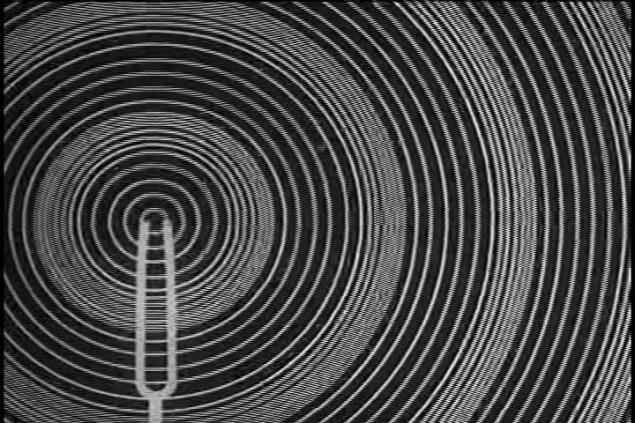620
10 amazing facts about sounds
Sounds - this is the first thing a person faces, appearing in the light. And the last thing he heard, leaving the world. But between the first and second passes a lifetime. And all of it is built on the noises, colors, saber, roar, music, in general, a complete cacophony. < Website publish ten most interesting facts about them.

1. Their level is measured in decibels (dB). The maximum threshold for the human ear (when the pain has come), this intensity in the 120-130 decibel. And death comes at 200.
Normal conversation - about 45-55 dB. Sound in the office - 55-65 dB. The noise on the street - 70-80 dB. Motorcycle with a silencer - 85 dB. jet at the start makes a noise of 130 dB. A Rocket - 145 dB. 2. Sound and noise are not the same. While the common people think so. However, experts between the two terms - a big difference. Sound - a vibration perceived by the senses of animals and humans. And the noise - it's chaotic mix of sounds.
3. Our voice in a recording, because we hear "not the ear». It sounds strange, but true. And the thing is that when we speak, your voice is perceived in two ways - via an external (auditory canal, eardrum and middle ear) and internal (through the tissues of the head, which the bass voice).
And while listening to the part involved only the outer channel.
4. Some people may hear the sound of their rotation eyeballs. As well as your breathing. This is due to defect inner ear when the sensitivity is increased above normal.
5. The noise of the sea, we hear through the seashell, at the just the sound of blood flowing through our blood vessels. The same noise can be heard by attaching to a normal ear cup. Try it!
6. The deaf can still hear. Only one example of this: the famous composer Beethoven, was known to be deaf, but could create great works. How? He listened ... teeth! Composer puts the piano end of the stick and the other end is clamped in his teeth - so the sound reaches the inner ear, which is the composer was completely healthy, as opposed to the external ear.
7. Sound can be converted into light. This is called "sonoluminescence." It occurs when the water to lower the resonator, creating a spherical ultrasonic waves. In the phase of the vacuum wavelength of the very low pressure cavitation bubble arises that while growing, and then in the compression phase quickly collapses. At this point in the center of the bubble there is a blue light.
8. "A" - the most common in the world of sound. It is available in all languages of the world. And everything in the world there are about 6, 5-7 thousand. Most people speak Chinese, Spanish, Hindi, English, Russian, Portuguese and Arabic.
9. Norma is when a person hears a softly spoken words from a distance of at least 5-6 meters (if it is a low tone). Or, at 20 meters in the colors high. If you have trouble hearing what they say from a distance of 2-3 meters, is checked by a audiologist.
10. We can not ignore that lose their hearing. Because the process takes place, as a rule, not once, but gradually. And at first, the situation can still be corrected, but the man did not notice what happened to him "something wrong." And when it is an irreversible process, we can not do anything.
via www.kp.ru/daily/26468/3338652/

1. Their level is measured in decibels (dB). The maximum threshold for the human ear (when the pain has come), this intensity in the 120-130 decibel. And death comes at 200.
Normal conversation - about 45-55 dB. Sound in the office - 55-65 dB. The noise on the street - 70-80 dB. Motorcycle with a silencer - 85 dB. jet at the start makes a noise of 130 dB. A Rocket - 145 dB. 2. Sound and noise are not the same. While the common people think so. However, experts between the two terms - a big difference. Sound - a vibration perceived by the senses of animals and humans. And the noise - it's chaotic mix of sounds.
3. Our voice in a recording, because we hear "not the ear». It sounds strange, but true. And the thing is that when we speak, your voice is perceived in two ways - via an external (auditory canal, eardrum and middle ear) and internal (through the tissues of the head, which the bass voice).
And while listening to the part involved only the outer channel.
4. Some people may hear the sound of their rotation eyeballs. As well as your breathing. This is due to defect inner ear when the sensitivity is increased above normal.
5. The noise of the sea, we hear through the seashell, at the just the sound of blood flowing through our blood vessels. The same noise can be heard by attaching to a normal ear cup. Try it!
6. The deaf can still hear. Only one example of this: the famous composer Beethoven, was known to be deaf, but could create great works. How? He listened ... teeth! Composer puts the piano end of the stick and the other end is clamped in his teeth - so the sound reaches the inner ear, which is the composer was completely healthy, as opposed to the external ear.
7. Sound can be converted into light. This is called "sonoluminescence." It occurs when the water to lower the resonator, creating a spherical ultrasonic waves. In the phase of the vacuum wavelength of the very low pressure cavitation bubble arises that while growing, and then in the compression phase quickly collapses. At this point in the center of the bubble there is a blue light.
8. "A" - the most common in the world of sound. It is available in all languages of the world. And everything in the world there are about 6, 5-7 thousand. Most people speak Chinese, Spanish, Hindi, English, Russian, Portuguese and Arabic.
9. Norma is when a person hears a softly spoken words from a distance of at least 5-6 meters (if it is a low tone). Or, at 20 meters in the colors high. If you have trouble hearing what they say from a distance of 2-3 meters, is checked by a audiologist.
10. We can not ignore that lose their hearing. Because the process takes place, as a rule, not once, but gradually. And at first, the situation can still be corrected, but the man did not notice what happened to him "something wrong." And when it is an irreversible process, we can not do anything.
via www.kp.ru/daily/26468/3338652/
How to properly wash your hair
What will happen with the hair when walking in the winter without a hat: an interview with trichologist























